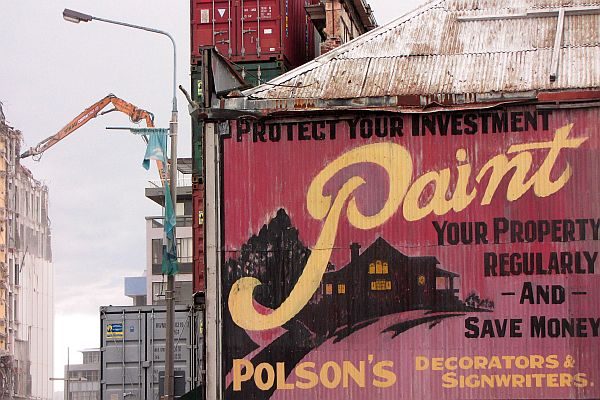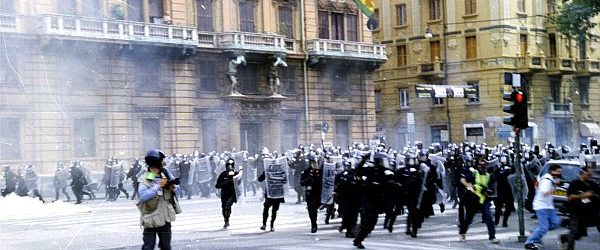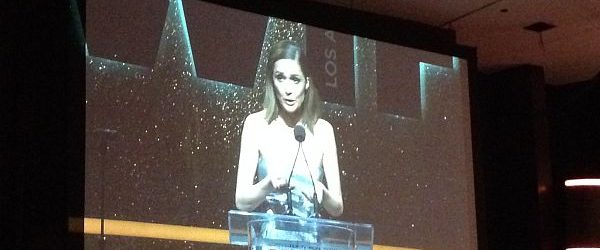Yesterday was the tenth anniversary of the earthquake that devastated Christchurch, killing 185 people. I last wrote about the city’s rebuild for Overland two years ago, and there has been so little progress that that piece barely needs an update. There’s a new, wildly popular food court, though its success as a hospitality venue has been to the detriment of all of the other places in the CBD having to compete with it. And so the shop front that features in the photo header of that piece has a new addendum: The Beating Heart Of Christchurch is now For Lease.
As so little has changed over the past two years, it might be worth driving deeper into the fundamental mistakes that have led the city to the place it is now, and why the inability of our politicians to address these issues is so utterly infuriating.
It’s not the hugely expensive mediocrity of the CBD that hurts the most. It’s that we had such a great opportunity to build back better, and were promised so much. When the Key government sidelined the council’s community-led plan and replaced it with its Blueprint, it boasted of the brilliant future that it would bring the city. Here is is Roger Sutton, the CEO of the Canterbury Earthquake Recovery Authority, writing about the plan in 2014:
The physical, tangible inner city transformation is only just beginning to appear, but within five years, Christchurch will be a vastly different city. And because of the planning that has been done – regardless of how unorthodox and hastily completed it may seem – this new city will absolutely set an international benchmark for urban design, innovation and liveability.
We’re well past the five-year deadline he set, and no-one is talking about Christchurch as an international benchmark for anything. With regards to liveability, the rebuild has failed to reach its own, low bar. A target of 20,000 people living within the ‘four avenues’ by 2024 was set. In 2020, there were about 7,000 people living in this area – the same number as in 2010. At the current rate of building, it would take until 2035, a full quarter-century after the earthquakes, to meet this very modest goal.
Further evidence of the city’s misguided priorities is found in the council’s survey of property use in the CBD. While ‘vacant’ is the second largest category, the most damning stat is the amount of floorspace dedicated to car parking, which is twice that of residential. Christchurch is a city that puts more emphasis on housing cars than it does people.
This is why I’ve called Christchurch the last city of the twentieth century. We’ve been well aware of the challenge that climate change presents to us as a species for decades now. We know that to curb our carbon emissions, we’re going to have to rethink the way we house people, so that they can reduce their dependence on passenger vehicles to get to where they need to be. Yet when given the power to rewrite planning regulations, instead of trying to reshape our urban landscape to prepare for these challenges, the government chose to supercharge the sprawl. Huge tracts of land on the outskirts of the city, which had formerly been prime market gardening land, are now endless cul-de-sacs of single-storey houses. Further out, the satellite towns of Rolleston, Lincoln, Kaiapoi and Rangiora have boomed, with thousands of new builds. All of these new residents then started clogging up the roads as they commuted back into the city, to which the government responded with more than a billion dollars’ worth of new motorways, which in turn encouraged even more sprawl in these towns. The Blueprint scrapped the suggestion for a light rail network, which was in the council’s draft plan. As a result, Christchurch remains the largest city in Australasia without a passenger rail network.
With thousands of homes being lost in the quakes – mainly in the east and across the Port Hills – there was clearly a need to rapidly find places to house people. But what was expedient in the short term has become a long-term problem. Houses are most people’s principal asset, and are expected them to last for at least a generation, if not two. The government could have adjusted the settings to make well-designed, high density living in the central city and surrounding suburbs an affordable option for people. Instead, they went with the low-density urban sprawl was best suited for the 1950s. Because of the decisions made in 2012 and 2013, this is a problem that Christchurch will be struggling with until at least 2050.
With the scales tipped so strongly in favour of sprawl, it is no wonder that the central city is struggling. The developers who built the retail core frequently complain about the lack of car parking, while if you walked around those streets and judged by the sheer number of Wilson Parking signs, you’d think there was nothing but carparks. What the developers really mean is that they want more ‘free’ parking, where by ‘free’ they mean ‘subsidised by the public’. With so many residents utterly dependent on private vehicles, CBD retailers are fighting a losing battle against the suburban malls and their endless decks of carparks. All of the major malls have had expansions and refurbishments to cater for this need post-quake. Perhaps the last hope for the CBD is that Riccarton continues to expand eastwards until it merges with the central city.
This is what infuriates me so much about the rebuild. We had a once-in-a-lifetime opportunity to reshape the city to face the challenges of the coming century. Not only have we failed to rise to them, but the first decade of the rebuild has made it much more difficult to address them any time soon. That’s why this quote from the same essay by Sutton depresses me so much:
Let’s reflect honestly on what Christchurch was before the quakes – a sprawling city with a few restrictions doing a little to provide any sense of cohesiveness and vitality in its inner city area. There was more office space in the central city than the market required, which meant there were a lot of empty spaces. And the retail sector was not competing well against the various suburban malls that anchor the corners of the city with their ease of access and good parking.
He’s describing Christchurch before the quakes. Everyone was aware of the problems. But here we are, ten years and countless billions of dollars later, and he could be describing the city as you see it today. Far from setting ‘an international benchmark for urban design, innovation and liveability’, we’ve recreated the sprawling Christchurch we said we wanted to leave behind.
Image by Trish H-C




